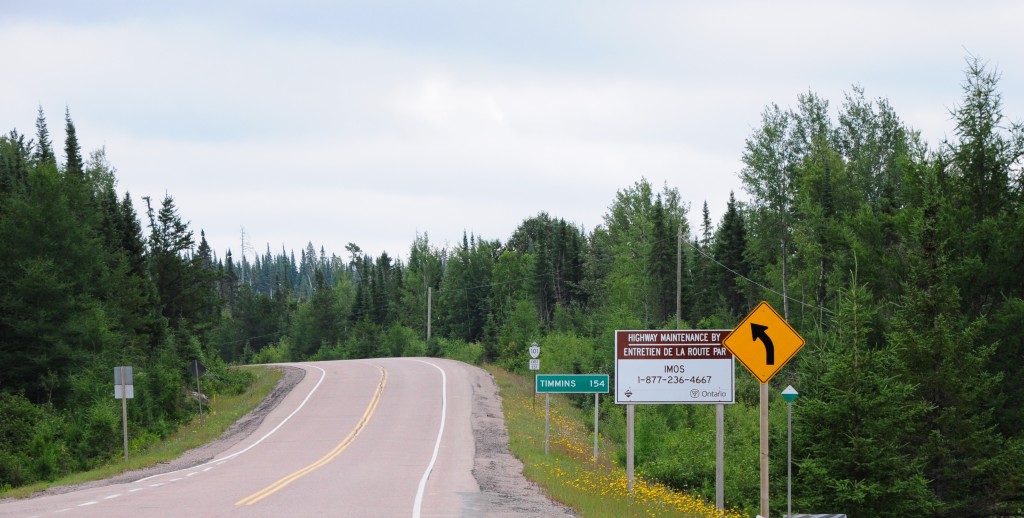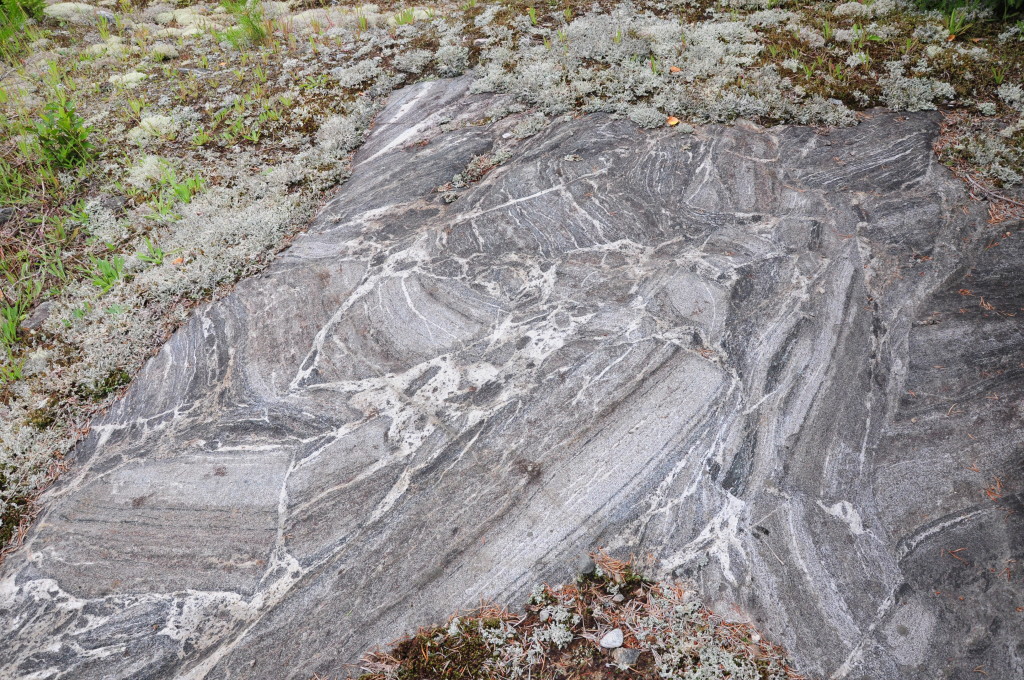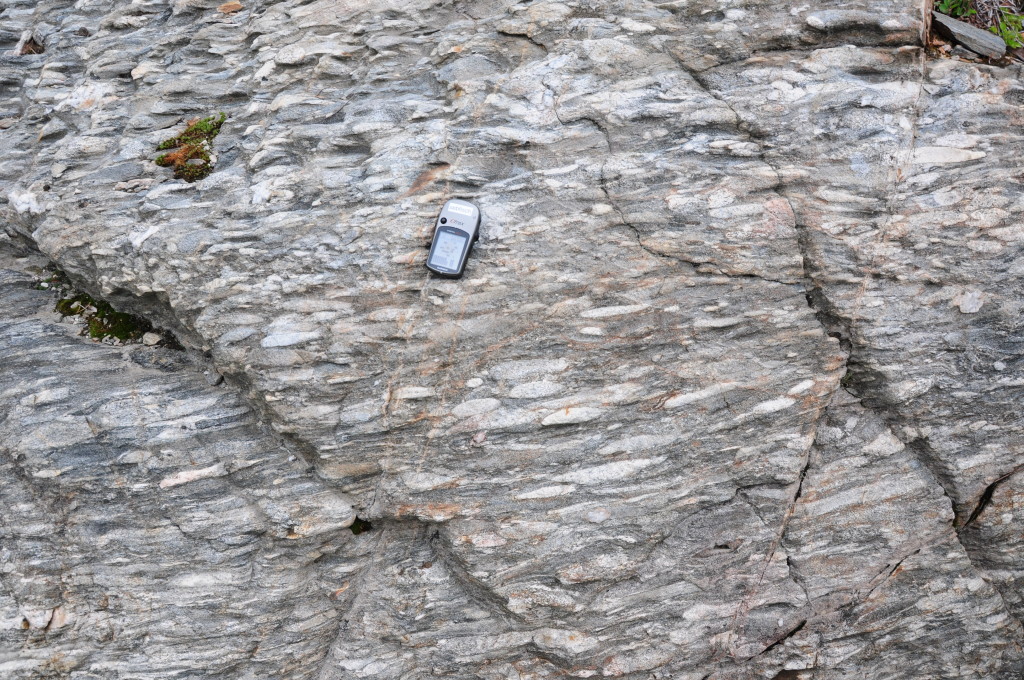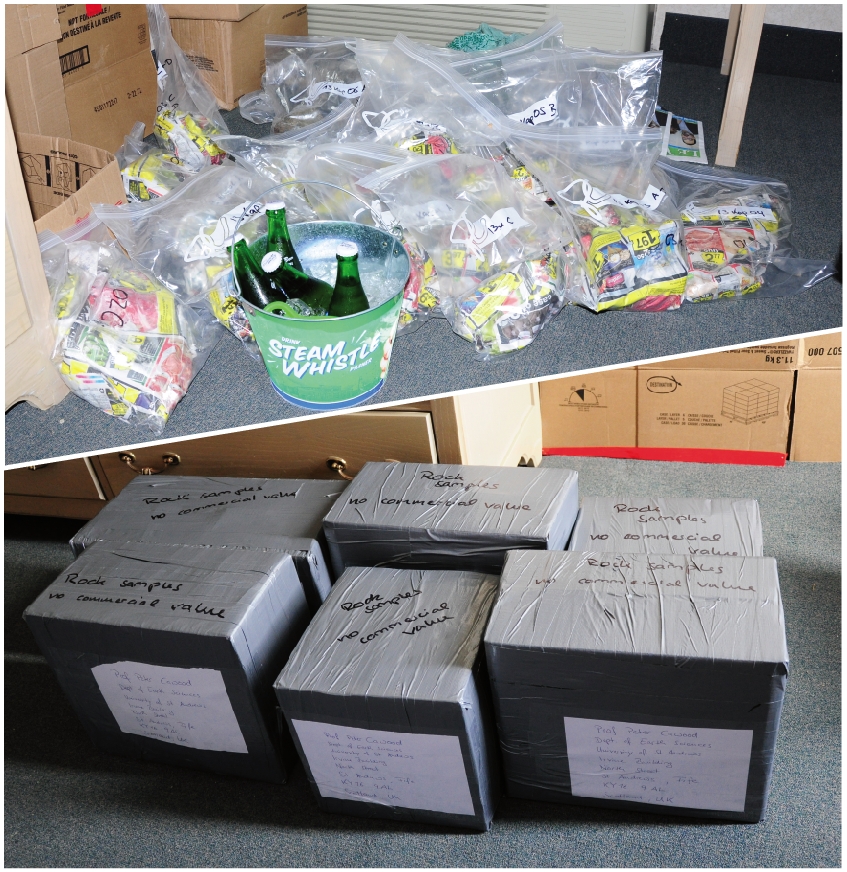Sebastian “Batzi” Fischer is a hard rock geologist with a particular interest in metamorphic petrology. Currently a PhD student at the University of St Andrews, he is looking at the mineral zircon in mafic metamorphic rocks, with a focus on the influence that partial melting has on the zircons’ isotopic composition.
For my PhD project I look at the mineral zircon in lower crustal rocks and how partial melting of mafic rocks would affect the commonly used geochemical proxies (U-Pb, Hf, O isotopes and trace elements). When I applied to St Andrews, I had proposed to use the Lewisian gneisses of NW Scotland as a field area, where I knew there where some nice mafic migmatites [1] that I could use to compare zircon populations from the mafic melanosome with those of in situ leucosome and also those in larger felsic sheets, the latter representing an early stage of pooling and transfer of melts away from their sources.
My supervisors thought it was a good idea to look at another field area as well, one that is widely accepted as a cross section through the continental crust. So, in August 2013, a month before I would actually move to St Andrews, I found myself in a plane to Canada, with the aim of sampling the rocks of the Kapuskasing uplift.
The Kapuskasing uplift is part of the Kapuskasing structural zone in the Wawa-Abitibi greenstone belt (which in turn is part of the Superior province in E Canada). Here, a major thrust fault, the Ivanhoe lake fault zone cross-cuts the E-W trending Wawa-Abitibi belt. Along the thrust, the granulite facies lower crust is juxtaposed against the greenstones of the Abitibi. Walking, or better: driving, westwards, one progresses through amphibolite facies rocks into the greenschist facies of the Wawa subprovince (including the metavolcanics of the Michipicoten belt) – basically travelling up crustal level. Pressure estimates for the formation of the highest grade rocks are about 10 kbar – which can be translated to: they used to be at depths of about 30 km. At these depths, they were heated to temperatures in excess of 800 °C, which was enough to cause them to partially melt. The completeness of the crustal section that the Kapuskasing uplift exposes allows comparison of these high grade rocks (and their zircons) with medium grade, amphibolite facies rocks that didn’t undergo partial melting. The whole section is mainly made up of TTG gneisses (metamorphosed tonalites, trondhjemites, and granodiorites) but also contains abundant mafic gneisses (and a few metasediments). Therefore, the area appeared to be an ideal field laboratory for the zircon study I had in mind.
To acclimatise and get over the jet lag, I spent a day in Toronto, wandering through the streets. At least in the Kensington Market area of Toronto, which seems to be the local equivalent of San Francisco’s Haight-Ashbury, “Geology” is present (Fig 1). I then flew from Toronto to the mining town of Timmins in northern Ontario. Here, I met my supervisor and a member of the Canadian Geological survey, who has been studying the Kapuskasing rocks since his PhD.
The next day, we drove from Timmins to the Kapuskasing, looking at outcrops along highway 101 between Foleyet and Chapleau. At first I felt that the amount of outcrop was a bit underwhelming; this bit of Northeastern Ontario is mainly forest (Fig. 2), and since it’s a craton the topography is rather a smooth rolling of hills than impressive cliff exposures. I was probably a bit spoiled from working in Scotland before. However, where there was the occasional outcrop along the road, they turned out to be rather spectacular in places (provided one likes high grade metamorphic rocks – but then again, who doesn’t?). A few pictorial impressions (with explanations) are accompanying this text (Fig 3 – 8).
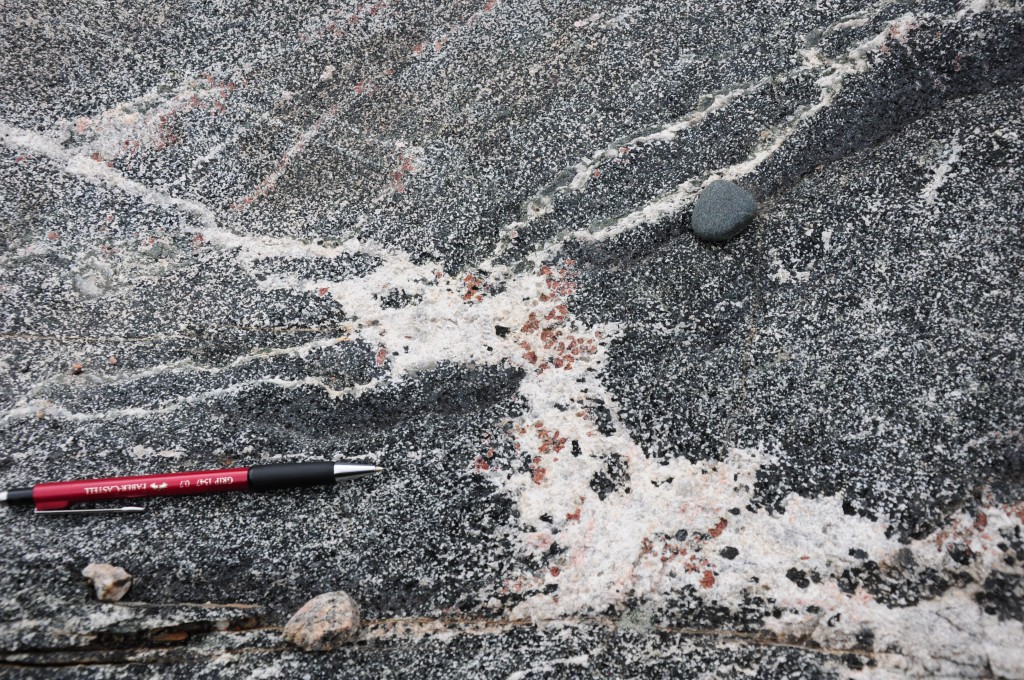
Fig 4. Mafic migmatite with peritectic garnet in the leucosome. Note how smaller leucosomes feed into the larger “melt” pocket (centre). Garnet is almost exclusively confined to leucosome. In places most of the melt has drained from the leucosome leaving behind what seems to be layers/veins of garnet (e.g. top centre).
We travelled from east to west and consequently from high-grade to low-grade rocks. The evening and night was spent in the motel in Chapleau – a small township that hosts a logging mill, paper production and also some mining geologists. The next day, we drove back along the highway up to the Ivanhoe Lake Fault and sampled the best of the outcrops we visited the day before (and a few we had missed).
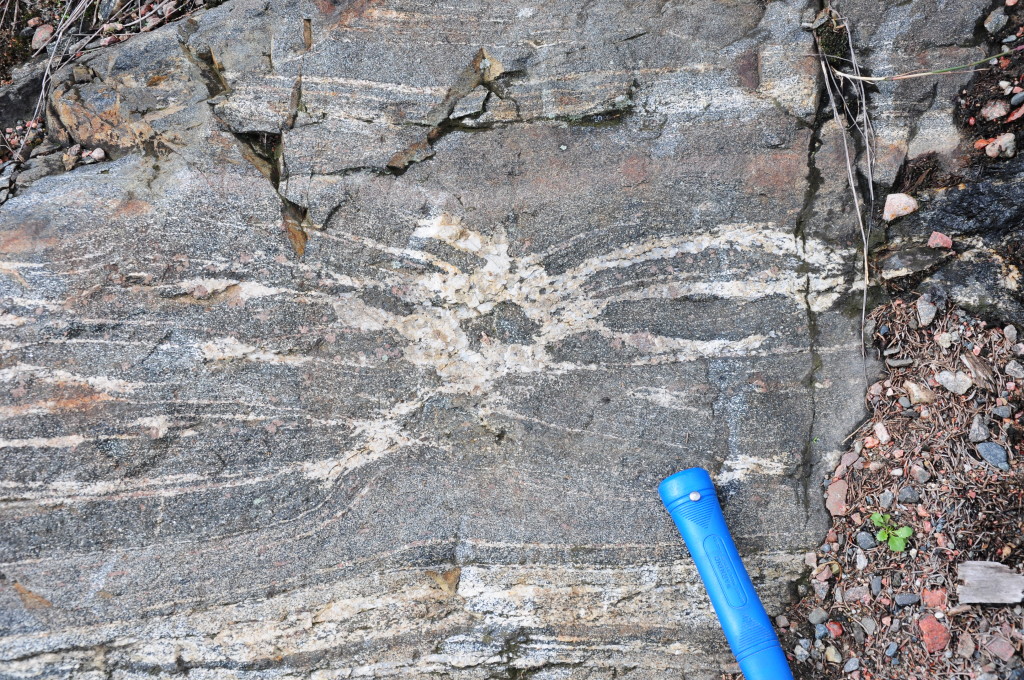
Fig 5. Nice illustration of the structural control of melt distribution: melt moves to sites of lower pressure (dilation site), in this case a boudin neck.
We stayed another day to meet Chapleau-based geologists from “Probe Mines”, who showed us some of the outcrops of the Borden Lake belt, where they had found gold. They were interested in the opinion of experts of the area, as the gold didn’t seem to be confined to a particular lithology but could be found in anything from metaconglomerate to mafic gneiss. I certainly felt I couldn’t contribute very much, but it was interesting to watch the big names doing field work.
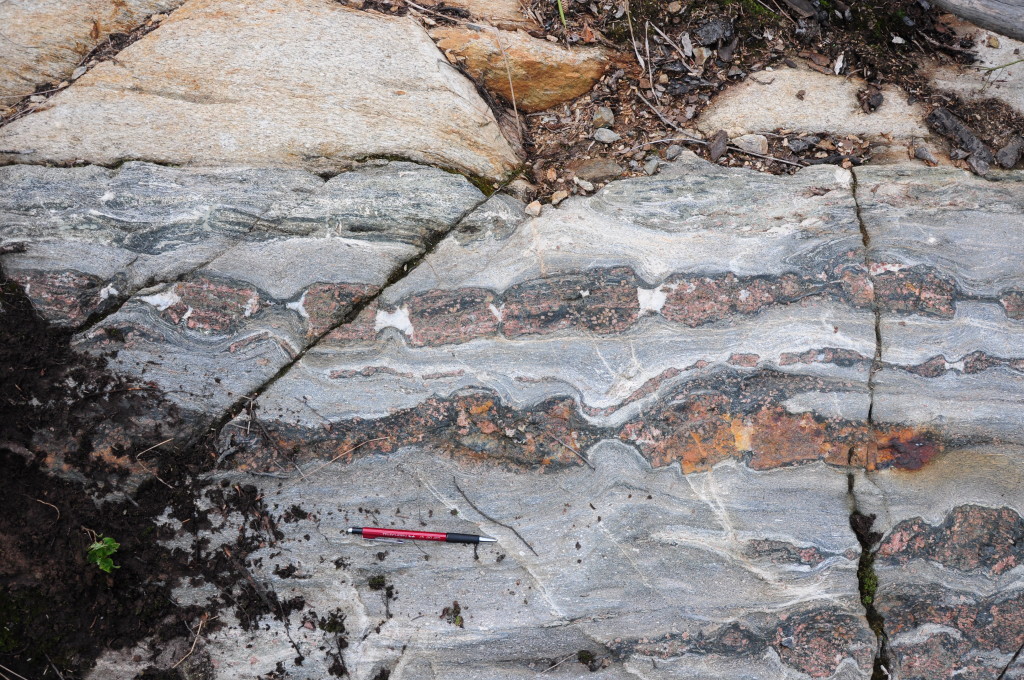
Fig 7. Drawn (mainly lower half of picture) and torn (just above the centre of the picture) boudins in a more competent, garnet-rich layers of a heterogeneous metasedimentary rock.
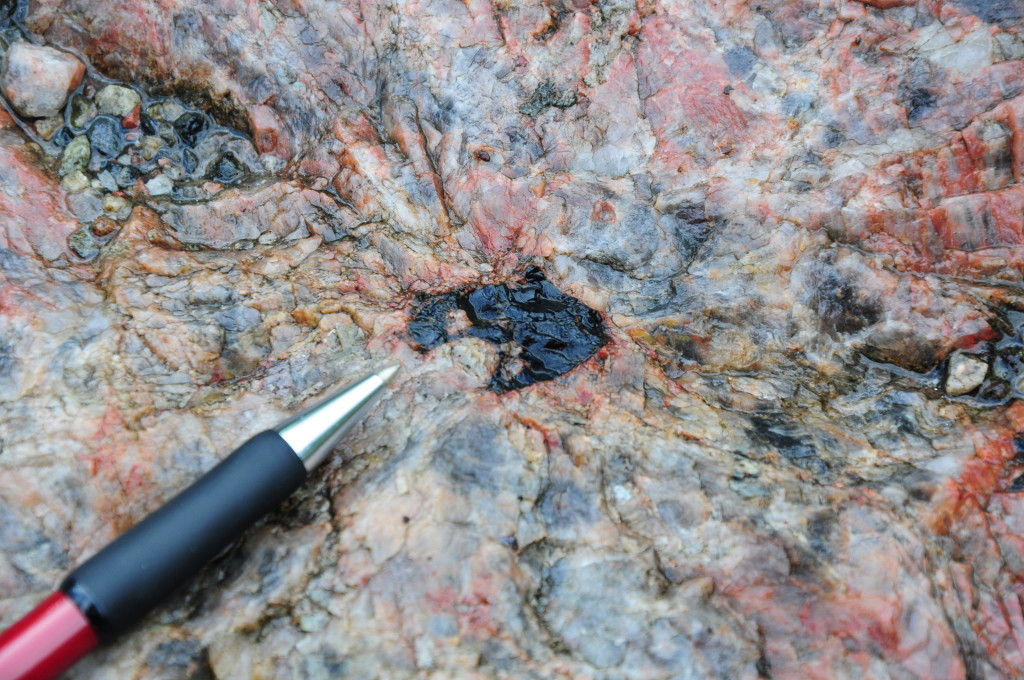
Fig 8. Allanite crystal in relatively coarse-grained granitic rock close to the Shawmere anorthosite.
On our way back to Timmins we stopped at a cafe in Foleyet, where they had a stuffed head of a white moose – a herd of these rare creatures seems to roam in this area. Back in Timmins my supervisor I was left alone in the hotel with all my samples, which I then organised, packed and shipped on the next morning (Fig 9). Although Timmins is a mining town, the post officer seemed to question my sanity a little when I came with six packages of rocks to be shipped to the UK…
[1] Johnson, Fischer, White, Brown & Rollinson (2012) Journal of Petrology, 53, 2115–2138.![]() This work is licensed under a Creative Commons Attribution-NonCommercial-ShareAlike 4.0 International License.
This work is licensed under a Creative Commons Attribution-NonCommercial-ShareAlike 4.0 International License.


